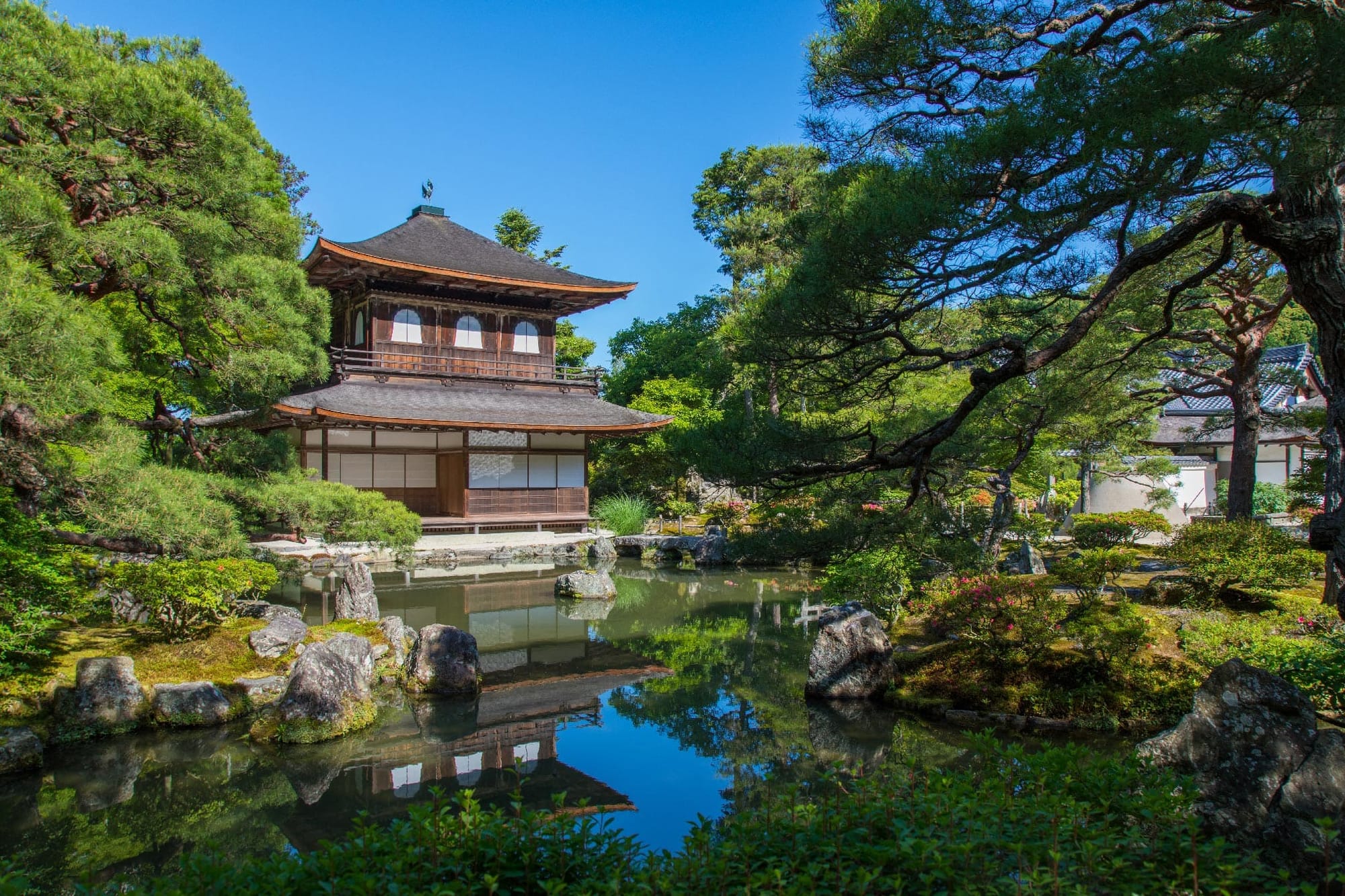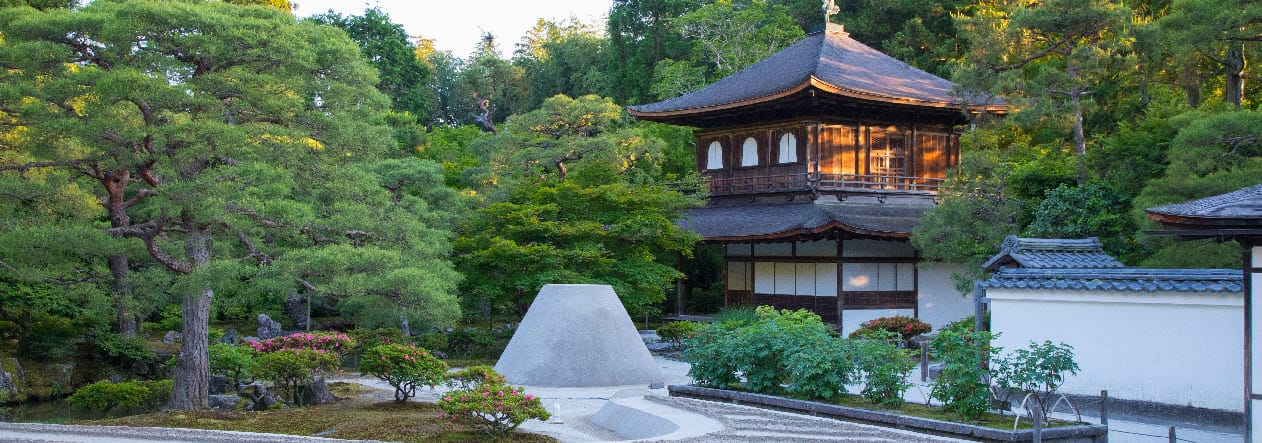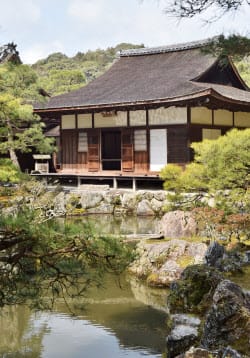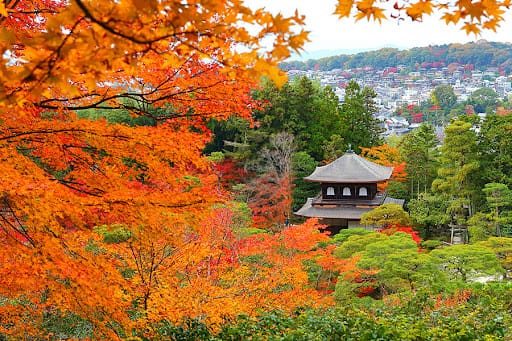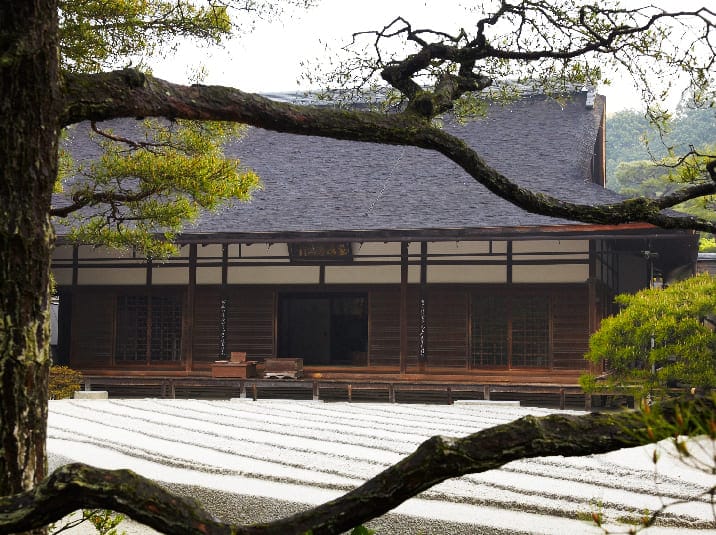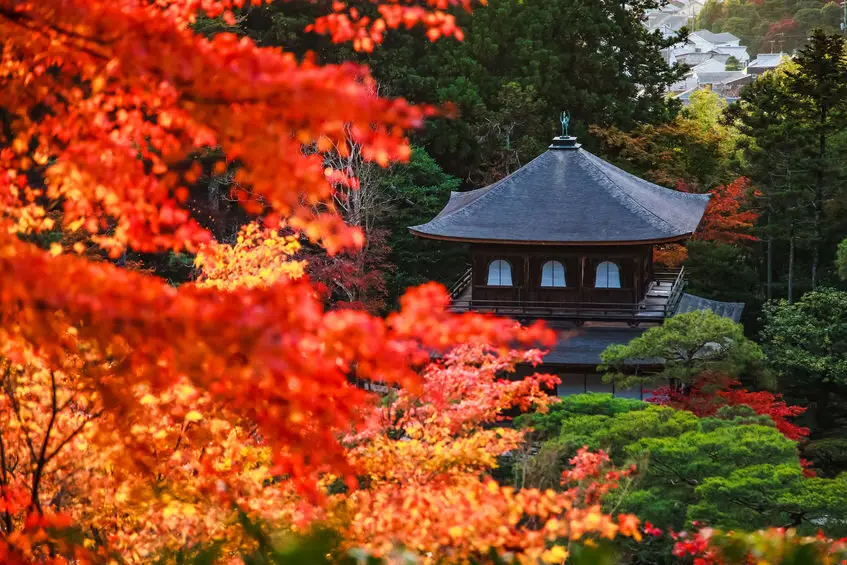Kyoto, a city abundant with shrines and temples, is one of the symbols of Japanese culture and history. In 794, "Heian-kyo" was established, and for over 1000 years, it served as the residence of the emperor and developed as the capital of Japan.
Today, it's a popular tourist destination for foreigners as the city where you can most feel the elegant atmosphere of Japan. Many shrines and temples have centuries of history, and many people make visiting these sites the purpose of their Kyoto trip.
While Kiyomizu-dera and Kinkaku-ji (Golden Pavilion) are generally famous, we highly recommend "Ginkakuji" (Silver Pavilion) to tourists. Although Ginkakuji might seem modest at first glance, it's actually a spot filled with the essence of Kyoto.
In this article, we'll introduce the charm points of Ginkakuji and the best seasons to visit in detail!
What is "Ginkakuji," often compared to Kinkaku-ji?
Source: Official website
Ginkakuji was founded during the Muromachi period (1336-1573) by the 8th shogun, Ashikaga Yoshimasa. After losing his power as shogun in the "Onin War," a conflict over succession, Yoshimasa decided to withdraw from politics and built this temple as his mountain villa.
Its official name is "Higashiyama Jisho-ji temple," but it came to be called "Ginkakuji" (Silver Pavilion) during the Edo period (1600-1868).
Ginkakuji, symbolizing the modest and tasteful "Higashiyama Culture," is characterized by its profound appearance. It's often contrasted with "Kinkaku-ji" (Golden Pavilion), built by Yoshimasa's grandfather, the 6th shogun Ashikaga Yoshimitsu, and both have become representative tourist spots in Kyoto.
The birthplace of the traditional Japanese aesthetic sense "Wabi-Sabi"
Have you heard of the term "Wabi-Sabi"? It's a word that expresses the modest aesthetic sense of the Japanese people.
"Wabi" represents the simple and calm beauty felt because something is lacking. "Sabi" is an expression that means the profound beauty felt in old things.
It's thought that the existence of Ginkakuji, which seems modest compared to the gorgeous Kinkaku-ji, gave birth to the culture of "Wabi-Sabi". The humble and calm appearance of Ginkakuji itself embodies the "Wabi-Sabi" that Japanese people cherish.
5 Must-See Spots When Visiting Ginkakuji
The National Treasure "Kannonden" (Silver Pavilion)
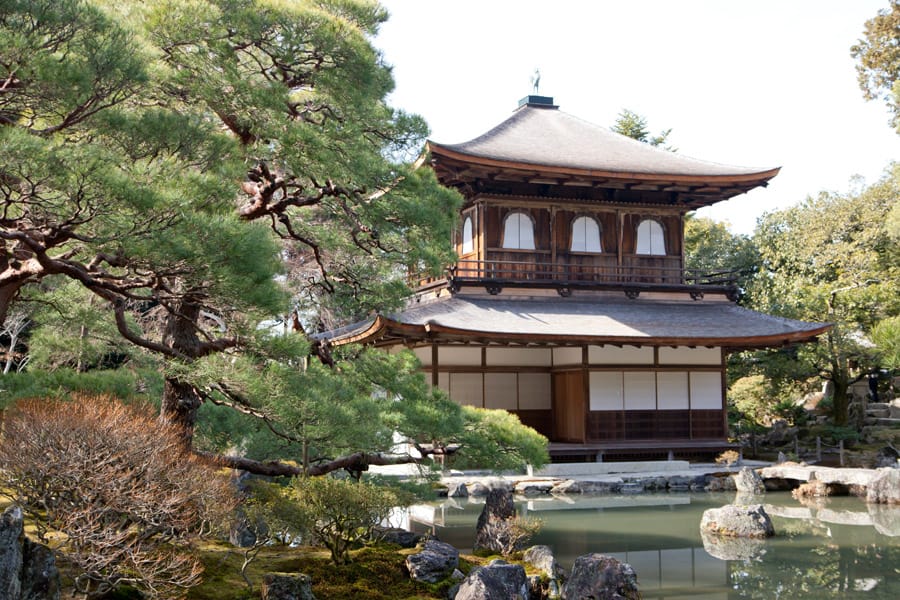
The first place you should visit at Ginkakuji is the Kannonden, which houses the Kannon statue. Designated as a National Treasure, Kannonden is called the "Silver Pavilion" and has become the symbol of the temple. The two-story pavilion style with a roof is an architectural style that symbolizes the Japanese culture of this era and is one of the highlights.
A unique feature of the Silver Pavilion is that it turns its back to the west, where Kyoto city is located, with the east side as its front. It's said that this might be because Shogun Yoshimasa, who built Ginkakuji, was disillusioned with the political world and wanted to turn his back on the capital.
Unfortunately, the Kannonden (Silver Pavilion) is not open to the public, and you cannot tour inside. It might be interesting to imagine Shogun Yoshimasa sitting on the veranda, leisurely gazing at the pond.
The Garden, designated as a Special Historic Site and Special Place of Scenic Beauty
Source: Official website
The garden surrounding the Kannonden is also a highlight of Ginkakuji. The garden of Ginkakuji is designated as a "Special Historic Site" and "Special Place of Scenic Beauty," which indicates its high value academically and scenically, comparable to National Treasures.
The garden spreads around the Kinkyochi pond in front of the Kannonden, designed so that the image of the Kannonden is reflected in the pond. The view of the Kannonden alongside the pond is a symbolic sight of Ginkakuji and is definitely a highlight to enjoy.
What particularly catches the eye in the garden is the "Kogetsudai," a sand mountain shaped like Mount Fuji. It's said to be a platform for viewing the moon.
What fascinated me the most was the "Ginshadan," where white sand is piled high to represent waves and open sea. It's said to have the role of reflecting moonlight to illuminate the main hall, and its fantastical charm is captivating.
The Traditional Tea Room "Togudo," designated as a National Treasure
Source: nikkei.com
The "Togudo," which was also used as Shogun Yoshimasa's residence, is another must-visit spot at Ginkakuji. The Togudo, designated as a National Treasure, is square-shaped and divided into four parts.
The hiwadabuki roof, made using cypress resin, is a traditional Japanese construction method. It's a great place to feel traditional Japanese culture, so be sure to pay attention to it.
The room called "Dojinsai" is considered the origin of traditional Japanese tea rooms and is a space where you can truly feel "Wabi-Sabi." When you open the sliding doors, a garden view spreads out, creating a space that looks like a postcard or painting.
When I visited in August, I couldn't enter, but it's specially open to the public only in spring and autumn. It's recommended to plan your travel schedule around these times.
The "Viewpoint" overlooking Ginkakuji and Kyoto city
Source: imamiya
A hidden gem at Ginkakuji is the viewpoint. As you proceed to the back of the premises and climb up a well-maintained gentle slope, you'll find a viewpoint overlooking the entire temple and garden. The Silver Pavilion (Kannonden) seen from afar has a different flavor, with a humble yet dignified appearance.
One of its charms is that it can be less crowded at certain times of the day as it's away from the popular main buildings. Enjoy the beautiful scenery that changes with the seasons at your leisure.
On the day I visited, it was sunny, and I could see a bit of Kyoto city in the distance. The trees and mountains surrounding Ginkakuji seemed to be protecting its existence from the city.
Ginkakuji viewed at twilight has an even more profound atmosphere, and you'll catch glimpses of "Wabi-Sabi" here and there.
The "Main Hall (Hojo)" with a solemn atmosphere
Source: Official website
The "Main Hall" is where the "Honzon," the most revered Buddha statue in the temple, is enshrined. It also serves as the "Hojo," a place used for receiving guests, practicing, and as living quarters.
Sliding door paintings by Yosa Buson, a famous Japanese haiku poet and painter, and Ikeno Taiga are displayed and are designated as Kyoto City Cultural Properties. The paintings spread across the entire sliding door are impressively powerful. While you usually can't tour inside, it's specially open to the public in spring and autumn.
Although it might seem a bit plain compared to other spots like the Silver Pavilion (Kannonden) and the garden, it's very beautiful in combination with the white sand art "Ginshadan" spread out in front of it. In fact, this is my favorite spot.
If you point your camera towards the Kannonden from in front of the Main Hall, you can take a lovely photo with the Kannonden in the distance beyond the "Ginshadan."
The "Autumn Foliage" season is recommended to enjoy Ginkakuji
Source: caede-Kyoto
While the lush green season and snowy winter landscapes of Ginkakuji are beautiful, the autumn foliage season is particularly recommended. There are many spots to view the autumn leaves around Ginkakuji, including the street leading to the gate and the garden.
The contrast between the vivid red, orange, and yellow trees and the unadorned Ginkakuji is beautiful, allowing you to feel the autumn in Kyoto.
During the crowded autumn foliage season, it's recommended to visit right after opening or just before closing. Right after opening is relatively less crowded compared to the afternoon, and you can feel the refreshing morning air, which is also charming.
Although it's crowded just before closing, the autumn leaves and Ginkakuji against the sunset sky exude "Wabi-Sabi." This time at Ginkakuji, with the melancholy of the day ending and night approaching, is my absolute favorite.
The surprising reason why it's called "Ginkakuji" (Silver Pavilion) despite not being silver
Why is "Ginkakuji" called the Silver Pavilion when it's not silver in color?
One reason is that many parts of "Ginkakuji" are modeled after "Kinkaku-ji" (Golden Pavilion), and it was named in contrast to the gorgeous "Kinkaku-ji" to highlight its simple and profound appearance.
There's also a theory that it was named so because "it looked silver when illuminated by moonlight." I prefer this explanation as it's more romantic.
In the past, it was said that "the silver foil that was once applied has peeled off," but later investigations found no evidence of this. In fact, the shogunate at the time of construction was financially strained and didn't have the budget for silver foil.
It's also recommended to visit "Kinkaku-ji" after seeing Ginkakuji

While many people visit both "Kinkaku-ji" and "Ginkakuji" when coming to Kyoto, I recommend seeing "Ginkakuji" first. This is because Ginkakuji, with glimpses of "Wabi-Sabi" everywhere, allows you to feel the Japanese and Kyoto-like taste more deeply.
Also, Shogun Yoshimasa referred to "Kinkaku-ji" in some aspects during construction. The Kannonden adopts the architectural style of the "Shariden" of "Kinkaku-ji," and having a pond in front is also the same style.
By visiting the profound and modest "Ginkakuji" before touring the glittering "Kinkaku-ji," you can discover new interesting aspects in their similarities.
Access
Address: 2 Ginkakuji-cho, Sakyo-ku, Kyoto City
Phone number: 075-771-5725 (Jisho-ji Temple Office)
Access: Get off at "Ginkakuji-michi" bus stop on Kyoto City Bus (routes 5, 7, 32, 102, 203, 204)
Visiting hours: Summer (3/11-11/30) 8:30-17:00 / Winter (12/1-2/28) 9:00-16:30
Closed: Open all year round
Admission fee: Adults (High school students and above) 500 yen / Elementary and junior high school students 300 yen
Official website: https://www.shokoku-ji.jp/en/ginkakuji/

